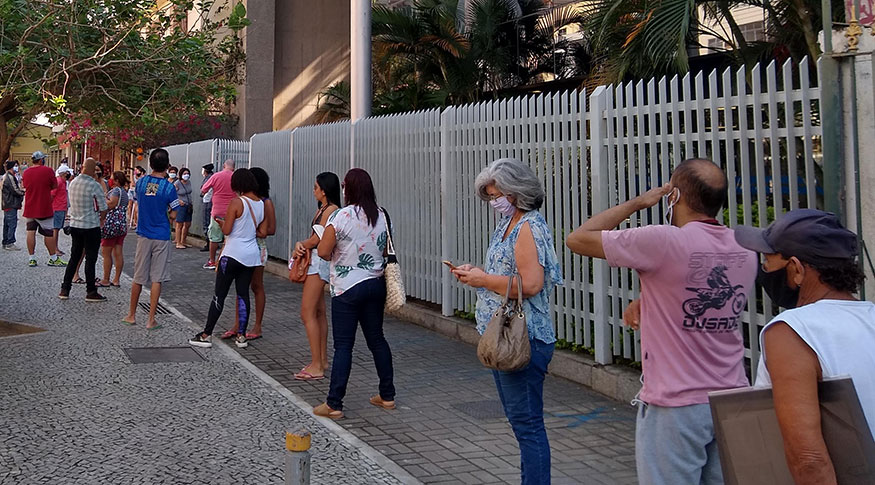PNAD COVID19
Unemployment in the pandemic reaches highest level in the fourth week of August
September 18, 2020 09h00 AM | Last Updated: September 23, 2020 12h49 AM

Unemployment rate hit 14.3% in the fourth week of August, an increase of 1.1 percentage points from the previous week (13.2%). As a result, the rate reached its highest level in the time series that started in May. That increase follows the growth of the unemployment population, with a total 1.1 million persons more in search for work in the country – 13.7 million unemployed persons. Data comes from the weekly edition of PNAD COVID, released today (18) by the IBGE.
The survey coordinator, Maria Lucia Vieira, highlights the increase of the unemployment rate, which was 10.5% in the beginning of May, and she explains that the hike was due to negative changes in the employed population as for the increase in the number of persons that started searching for work.
“In the beginning of May, persons were in social distancing, and there were not many looking for a job. The labor market was facing a period of pause before we could see what the outcome would be. The enterprises were closed and there was no place where those persons could work. So, as social distancing is reduced, people go back to the labor market in search of work, ” the researcher says.
The survey also indicates changes in the population's behavior regarding social isolation measures. The number of persons who were strictly isolated fell for the second straight week. Between August 23 and 29, 38.9 million persons were following that social distancing recommendation, a decrease of 6.5% versus the 41.6 million doing that in the previous week.
The survey coordinator says there is a relationship between the increase in the number of persons searching for work and the flexibilization of isolation.
“We have witnessed more flexibility in people's behavior, more movement towards job searching an a bigger pressure on it. The indicators reflect the way people have baheved regarding social distancing,” Maria Lucia says.
The population that stayed at home most of the time and went out only for basic needs remained stable: they are 88.6 million persons and represent 41.9% of the population in the country. There was also stability in the number of persons who followed no restriction measures, 5 million persons, and of those who reduced social contact but were still going out or receiving visitors - 77 million persons.
The number of employed persons who were away from work due to social isolation measures was reduced by 363 thousand and reached a 3.6 million. Persons in such a condition now make up 4.4% of all the employed population, estimated at 82.2 million. Among the 76.1 million employed persons not away from work, 8.3 million were working remotely.
7.2 million students had no school activities
The survey estimates at 45.6 million the number of persons enrolled in schools or universities in the fourth week of August. From that total, 7.2 million (15.8%) did not perform school activities at home in the period. The figure remained stable from the preceding week. The vacation period was mentioned as a reason for 970 thousand students not to perform school activities.
The number of students with activities stayed at 37.4 million. “We are still at the level with 82% of the persons who reported having school activities,” Maria Lucia highlights.
Number of persons with flu-like symptoms records decrease
In the fourth week of August, 11.3 million persons had at least one of the symptoms investigated by the survey, such as fever, cough and a sore throat. The figure is lower than estimated in the previous week, when 12.4 million persons reported at least one of the symptoms. “That represents 5.3% of the population. In May, the percentage reached 12.7%,” the researcher says.
Among persons who reported having symptoms, 2.6 million sought medical assistance at a health establishment such as, for example, community healthcare units, emergency care units, SUS or private hospital. The number of persons seeking assistance at a public, private or military hospital was estimated at 799 thousand. Among those, 15.2%, or 121 thousand, were hospitalized.


















